Note: This review is by my husband Jim.
“From Stettin in the Baltic to Trieste in the Adriatic an iron curtain has descended across the Continent. Behind that line lie all the capitals of the ancient states of Central and Eastern Europe. Warsaw, Berlin, Prague, Vienna, Budapest, Belgrade, Bucharest and Sofia; all these famous cities and the populations around them lie in what I must call the Soviet sphere, and all are subject, in one form or another, not only to Soviet influence but to a very high and in some cases increasing measure of control from Moscow.”
Winston Churchill, March 5, 1946 at Westminster College in Fulton, Missouri
Life under Nazi overlords during World War II was horrific for the peoples of Eastern Europe, but it didn’t improve all that much once the Red Army arrived, ostensibly as “liberators.” Anne Applebaum’s Iron Curtain is an account (in great and graphic detail) of how the Soviets imposed their will on Eastern Europe, particularly in Poland, East Germany, and Hungary.
Applebaum is fluent in Polish and Hungarian, and so she has been able to utilize sources inaccessible to most western historians. The result is a much more comprehensive narrative of the imposition of Soviet style communism on what became the Eastern Bloc than has hitherto been available to the general reader in the West. And what a sad tale of woe it is!
Stalin was not about to allow unfriendly states to exist on his western border. Accordingly, the Soviet government began planning how to control the small countries of Eastern Europe once it became apparent that the Red Army would sweep into Germany. Negotiations with the western allies (the U.S. and Britain) for a post-war settlement at the Teheran, Yalta, and Potsdam conferences proved to be just window dressing, as the Soviets did pretty much what they wanted in areas controlled by their armed forces, irrespective of the agreements arrived at the conferences.
Pockets of armed resistance to Soviet rule continued for several years after the war against Germany had ended in 1945. Ukrainians fought Poles for control of disputed territory before new national boundaries were finalized under Russian supervision. The Polish “Home Army,” an anti-communist group that had formed while the Nazis were still in power, resisted the Soviet-imposed government on into the early 1950s before they were finally suppressed.
Mass deportations were effected immediately after the German surrender as Stalin sought to change the boundaries of Europe by relocating Poland several hundred miles to the west. This was “ethnic cleansing” writ large. Millions of people were put on trains and transported out of their native countries. Germans living in what had been East Prussia were sent west to a shrunken Germany while their former homeland became part of Poland. Whole groups of Poles and Ukrainians were in essence “swapped” – Poles living in the Soviet Union were shipped west, and Ukrainians in Poland were sent east.
As the Red Army poured into Eastern Europe, it was accompanied by the NKVD (the predecessor to the KGB) and a cadre of Moscow-trained communist nationals of each conquered country. The tightening of the Soviet grip was gradual, except in Germany. The Soviets even allowed relatively fair elections to take place in Hungary and Czechoslovakia in 1946 and 1947. The communists expected to win since they viewed themselves to be liberators of those countries. They were stunned to find out that they were very unpopular, garnering only small minorities of the votes. How then did the Soviets impose “totalitarianism” on the societies they conquered? Applebaum puts forth a number of explanations.
Most saliently, there were life-threatening repercussions to disobedience. The NKVD maintained control of the security apparatus and established Gestapo-like secret police institutions in all the occupied countries. They then employed intimidation, beatings, transportation to the Gulag, and executions of anti-communists to impose Stalin’s will on the general populace of all the eastern European countries except Yugoslavia, which, although communist, had not been “liberated” by the Red Army.
In addition, the Soviets immediately took control over the radio broadcasting capacity of each country. (They believed strongly in the power of propaganda and at that time, radio was the most powerful broadcast medium.) They took advantage of the natural tendency of people to defer to authority. Also, like the Nazis and early Soviet communists, the East European communists organized the youth into propaganda-driven organizations with putative goals of social or intellectual or physical achievement. And finally, after years of the war and depredations of World War II, East Europeans just wanted to return to normalcy, even if the new “normal” wasn’t very good.
Two other important considerations kept the otherwise not-very-workable system going. On the one hand, elites had many special privileges not available to the masses to keep them happy and in line. They therefore had a vested interest in maintaining the system. On the other hand, the hoi polloi had a number of well-established ways to get around the strictures and hardships of the Communist regimes. Even if you couldn’t find anything in the notoriously empty grocery stores, it wasn’t impossible to get what you wanted “na leva” (literally, “on the left” – i.e., outside of normal channels.) Furthermore, while you couldn’t get access to anything interesting to read in regular book shops, “samizdat,” or censored publications reproduced by hand and passed from reader to reader, still allowed those who could work the system to get information from the world on the other side of the curtain.
Most of Applebaum’s book, however, is not about why the takeover happened, but rather what it was like, and what the nature was of the system the Communists sought to impose in East Germany, Poland, and Hungary.
After she describes the process of the takeovers, Applebaum details the careers of several “mini-Stalins,” who were put in charge of various governments by the Soviets. All of them were nationals of the countries they came to rule, but had been communists before the war, and received rigorous training in Stalinist statecraft in the Soviet Union. She also gives an account of ordinary life in the communist countries, bleak from consumer goods shortages, dreary propaganda-laden “entertainment,” and virtually complete lack of political choice.
Applebaum ends the history in 1956 with the Polish and Hungarian uprisings, although that was far from the end of the Iron Curtain. But there was in fact a sea change then. Stalin had died in 1953, and the Kremlin was trying to stabilize its satellites. Presumably, she will continue the saga with another volume.
Evaluation: Applebaum’s prose is readable and her historical research is very thorough. To some extent, the book drags on because the story is so depressing. But for anyone who wonders how people could live so long under the adverse conditions of communist-ruled Eastern Europe, this book provides a very complete explanation.
The author is what we might label a “neo-con” on the political spectrum. She currently directs political studies at the Legatum Institute, and before that worked for the American Enterprise Institute. She is also married to a fierce anti-communist Polish politician. While I could see how her background may have colored her presentation, I could not quarrel with the facts she presented.
I listened to the audio version. The narrator, Cassandra Campbell, seemed quite competent, particularly in her fluent pronunciation of foreign words and names. Nevertheless, the unrelenting progression of depressing events caused the listening experience to be a downer. Moreover, some readers less familiar with the time and geography under consideration might miss the maps, photos, and footnotes that accompany the written book.
Rating: 3.5/5
Published by Random House Audio on 21 compact discs (unabridged), 2012

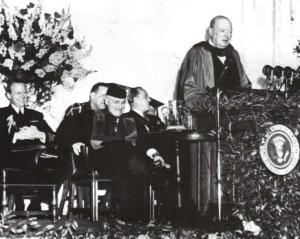

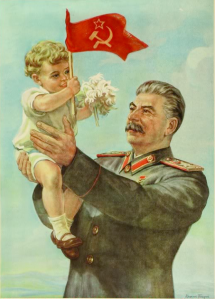
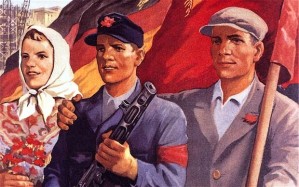
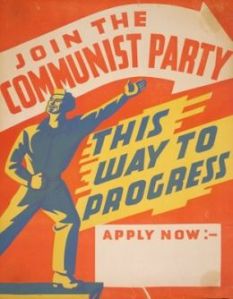
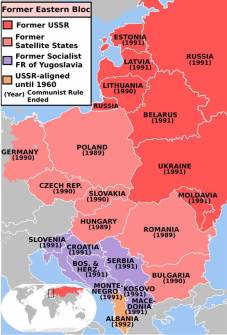






Even though I’m interested in that time period, I think a book like this would be too dense for me. I don’t think I could stand it on audio at all.
Oh this is right in my neighborhood. This is the story of my husband’s grandfather and other relatives. They lived this stuff. I will tell you that the Nawrots hate the Russians just as much as the Germans (you should have heard his commentary when I was reading Catherine the Great – ha!). They were every bit as bad as the Nazis. I’m going to have to read this, if I can’t find the audio. Must must.
I have a real fascination with this subject, and you’ve presented it so clearly and with such fluidity, that I think I would sorely miss out if I didn’t read this book. It seems as though life for those behind the iron curtain remained horrible for some many years after the war, and I would be interested in exploring just why this happened in the way that it did. Excellent review today, Jim!
I really wish I could get into non-fiction. I’m sure my husband would appreciate it!
I’m currently listening to this book. It’s interesting but I’ve only been able to listen to it in small doses because of how depressing it is!
Oddly, the politics of the postwar years have rarely called to me. But the audio by Cassandra Campbell may just compel me to give this a try. Whenever I listen to this kind of nonfiction on audio, I buy the book or check it out the library so I can see the maps and photos. I love that Stalin and the kid poster.
I don’t see how a book like this could be anything but a downer. I’m sure listening to it makes it even more “real” (if that makes sense.)
Good map, which I found online, and then found your blog of reviews, and eventually this one, and the date. I think I have heard the author NPR or the BBC, among others on these subjects. This is now almost 10 years ago.
Just recently BBC had the history of the defense of Warsaw shortly after WW1, on their show the Forum. (Cavalry and Code-Breaking)
If we think of how well we remember events in our own countries (whichever that may be), from that long ago or further, the importace of history is so clear.
Glad to find your blog, thank you!